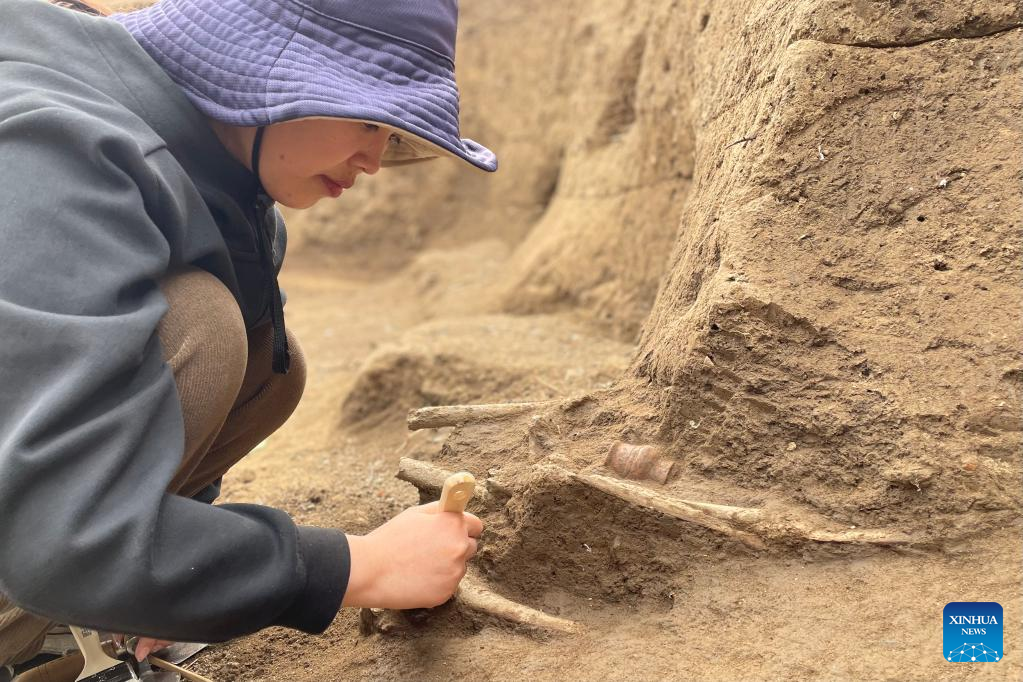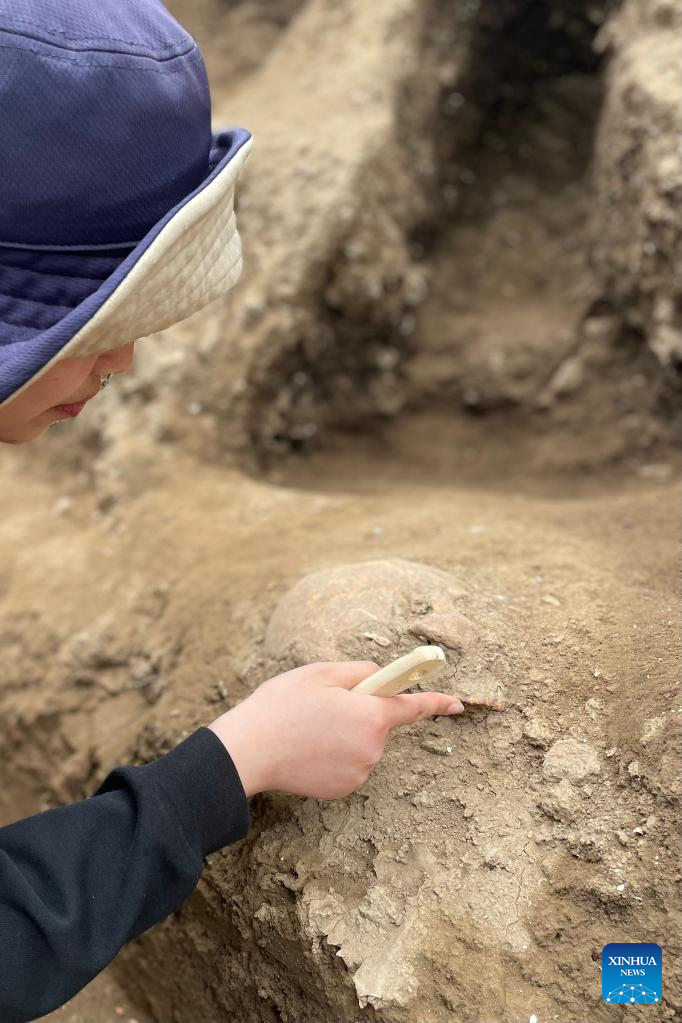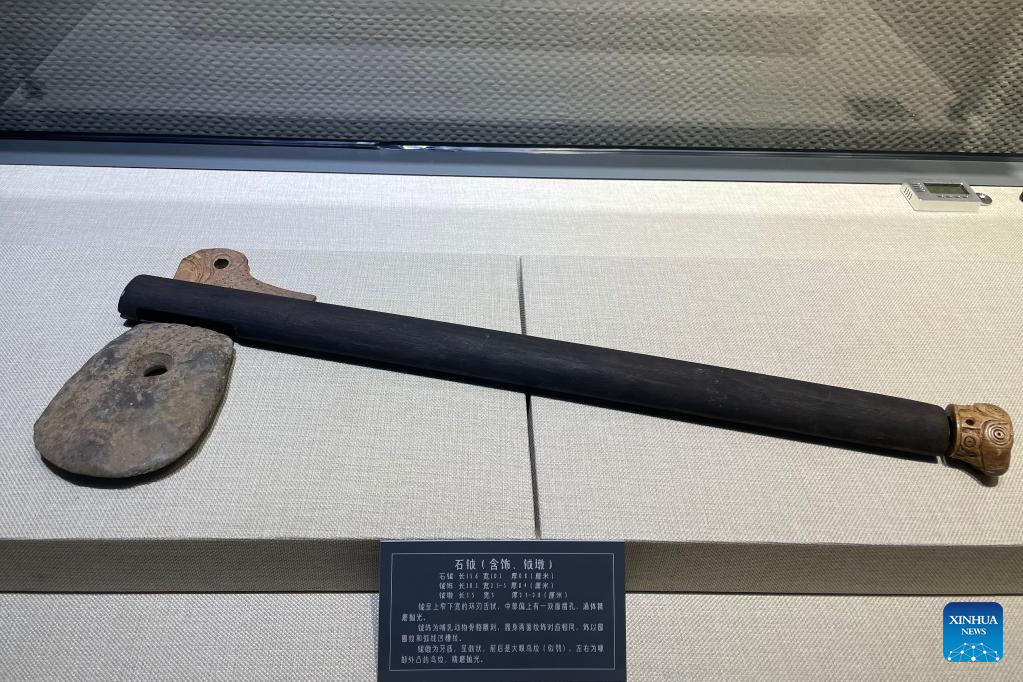Second excavation launched in east China's neolithic site

This photo taken on April 13, 2023 shows the Sanxingcun relic site in Jintan District of Changzhou, east China's Jiangsu Province. A second excavation was launched on Saturday at a neolithic site in east China's Jiangsu Province, three decades after the first one, which unearthed more than 4,000 items. (Xinhua/Zhu Guoliang)
NANJING, April 15 (Xinhua) -- A second excavation was launched on Saturday at a neolithic site in east China's Jiangsu Province, three decades after the first one, which unearthed more than 4,000 items.
The Sanxingcun relic site in the Jintan District of Changzhou City, covering about 350,000 square meters, dates back to between 6,500 and 5,500 years ago, according to Li Moran, deputy researcher with the Institute of Archaeology under the Chinese Academy of Social Sciences who is in charge of the excavation at the venue.
He said 800 square meters, including the dwelling areas and burial sites, will be excavated this time. The work is expected to be finished by the end of this year.
The first excavation was conducted between 1993 and 1998, when, in an area of more than 500 square meters, archaeologists unearthed over 1,200 human remains in 1,000-plus tombs, including more than 200 complete skulls. A study by the Institute of Vertebrate Paleontology and Paleoanthropology under the Chinese Academy of Sciences along with the Jintan District about the DNA of the bones is underway.
Archaeologists have also recovered a large number of jade articles, stoneware, pottery, and bone objects, as well as carbonized rice.
Li Moran noted that considering the size of the Sanxingcun relic site, its large population, differences in the number and grade of burial objects, and the layout of the site comprising separate living, handicraft production, and burial areas, society at that time had started to become complex, which may be in a period of transition toward inequality.
"The second excavation could help us learn more about the settlement layout of the site, and we are expected to have a panoramic restoration of the life of people in the period," said Li.

A staff member operates at Sanxingcun relic site in Jintan District of Changzhou, east China's Jiangsu Province, on April 13, 2023. A second excavation was launched on Saturday at a neolithic site in east China's Jiangsu Province, three decades after the first one, which unearthed more than 4,000 items. (Xinhua/Zhu Guoliang)

A staff member operates at Sanxingcun relic site in Jintan District of Changzhou, east China's Jiangsu Province, on April 13, 2023. A second excavation was launched on Saturday at a neolithic site in east China's Jiangsu Province, three decades after the first one, which unearthed more than 4,000 items. (Xinhua/Zhu Guoliang)

This photo taken on April 14, 2023 shows a stone axe on display at the Jintan museum in Jintan District of Changzhou, east China's Jiangsu Province. It was unearthed during the first excavation at Sanxingcun relic site. A second excavation was launched on Saturday at a neolithic site in east China's Jiangsu Province, three decades after the first one, which unearthed more than 4,000 items. (Xinhua/Zhu Guoliang)
Photos
Related Stories
Copyright © 2023 People's Daily Online. All Rights Reserved.









